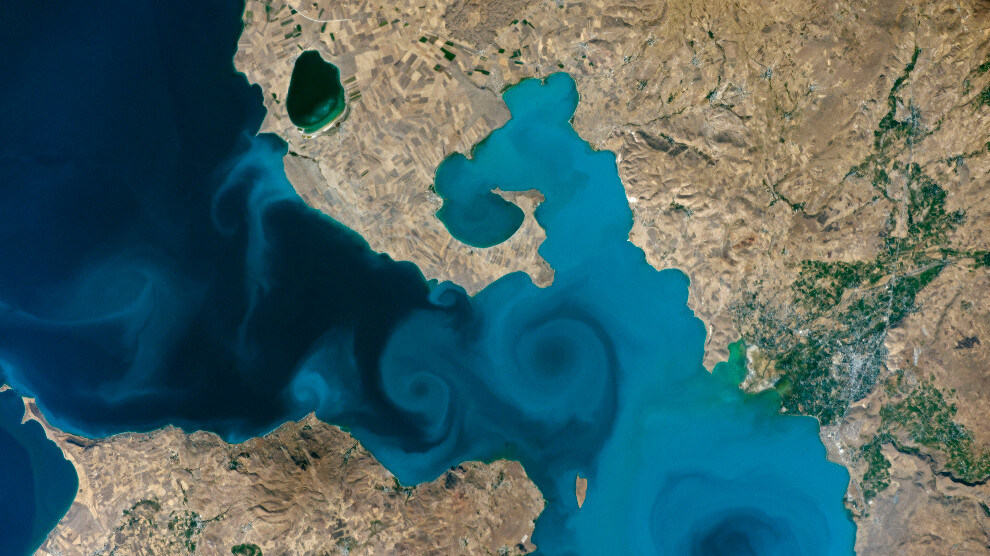Lake Van photo wins NASA competition
A satellite image of Lake Van in Van province has won NASA's Tournament Earth photo competition. The photo was taken on board the ISS and was shot by US astronaut Kate Rubins.
A satellite image of Lake Van in Van province has won NASA's Tournament Earth photo competition. The photo was taken on board the ISS and was shot by US astronaut Kate Rubins.

A satellite image of Lake Van (Kurd. Gola Wanê) in the province of the same name in northern Kurdistan has beaten 31 of the world's most beautiful natural sites in NASA's Tournament Earth photo competition. The winning image in this year's edition of the competition was taken by U.S. astronaut Kate Rubins aboard the International Space Station (ISS) on September 12, 2016.
The photo impressively shows a part of Lake Van, the largest lake on Turkish territory. With an area of 3,740 km², a maximum depth of 451 meters and a shore length of 430 kilometers, Lake Van is seven times larger than Lake Constance. At the same time, Lake Van is the largest soda or alkaline lake in the world with a salinity of about 23 grams per liter and an alkaline pH of 10. Because of its high concentration of salts, the lake does not freeze even in cold winters. The alkaline water harbors little life.
Lake Van was formed in a depression and is surrounded by volcanoes and mountains up to 4000 meters high. It has no outflow; the lava flowing out of Mount Nemrut in Bitlis has formed a barrier. Its water level therefore decreases by evaporation. During the Urartian Empire, the level was probably much lower than today. In 2011, cores taken from Lake Van by researchers at the University of Bonn revealed 400,000 years of the water body's evolutionary history.